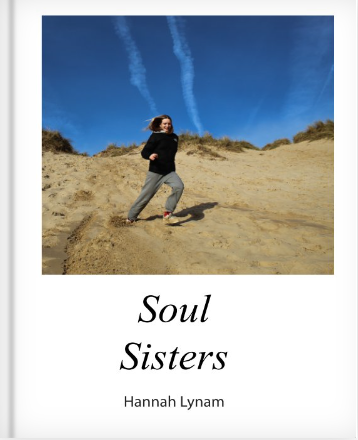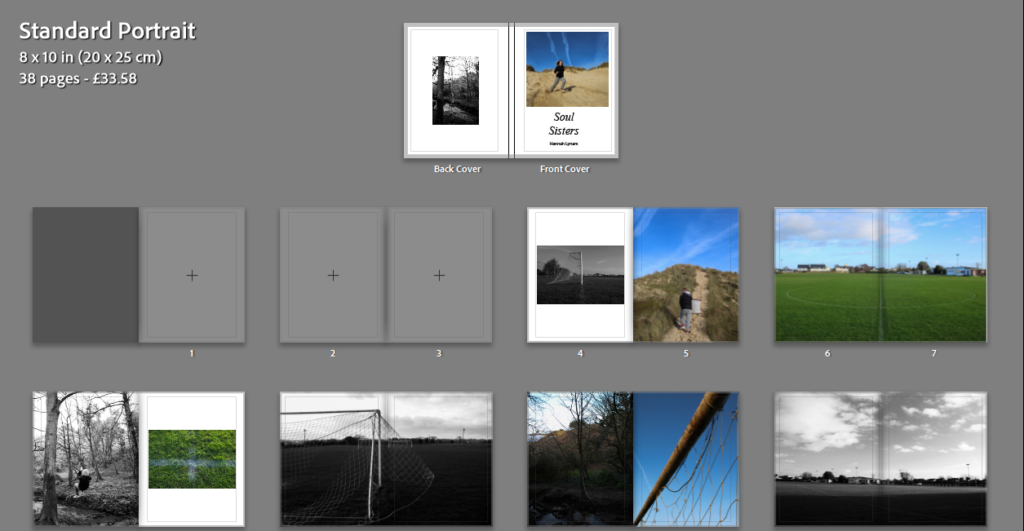


I decided to name my book ‘Soul Sisters’ as it automatically tells the reader what the book is about and gives a background and meaning to the images. I chose the front cover to be my sister running down the sand dune because it is almost like she is running down the page which corresponds with the final image in the book where it is like she is running off the page to demonstrate that it is the end of the book.

I used a variety of layouts within my book to ensure the book had some character to it. I decided to have a double page spread for every other page as I wanted the book to flow and have some sort of consistency. I also, experimented with placing different images next to each other, creating juxtapositions.
I decided not to include my essay within my book as I didn’t think it fit the theme of the images well enough.


For the back cover, I chose a black and white image of an old rope swing because it links to the idea that it is a memory from mine and my sisters childhood. The rope swing on it’s own demonstrates how we have left these times behind us but the rope is still there which is most likely used by other children making memories like me and my sister did.
Overall, I am pleased with the outcome of my book as I think it displays the theme of nostalgia, femininity and childhood which links back to the work of Justine Kurland. My work linked back to Kurland’s work in a way as it explored the themes of childhood and feminist in what could be argued as rural landscapes. In my opinion, the images within the book clearly demonstrates my childhood memories that I have created with my sister, telling the reader a story. When taking the images and going back to the places that were once second homes to me and my sister, I felt a sense of nostalgia as everything was almost the same as when we used to go there. One thing that I would have changed would have been getting more portraits during the football pitch shoots. I also would include more childhood friends in the shoots which would show a real comparison to Kurland’s work.
